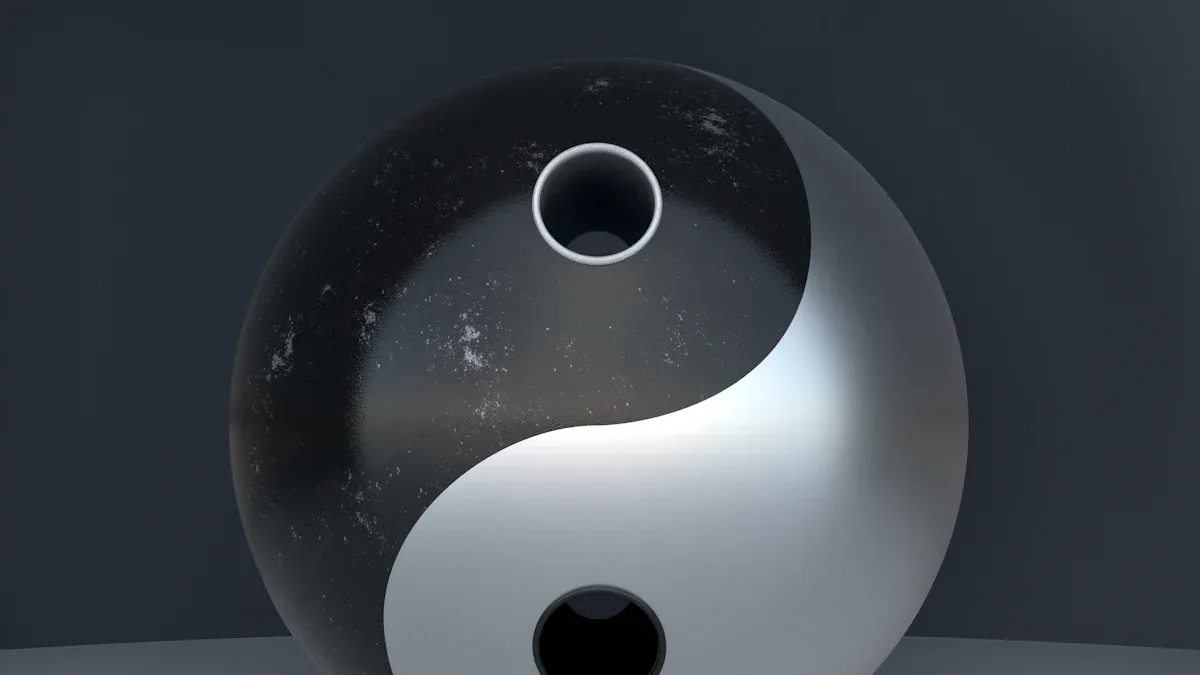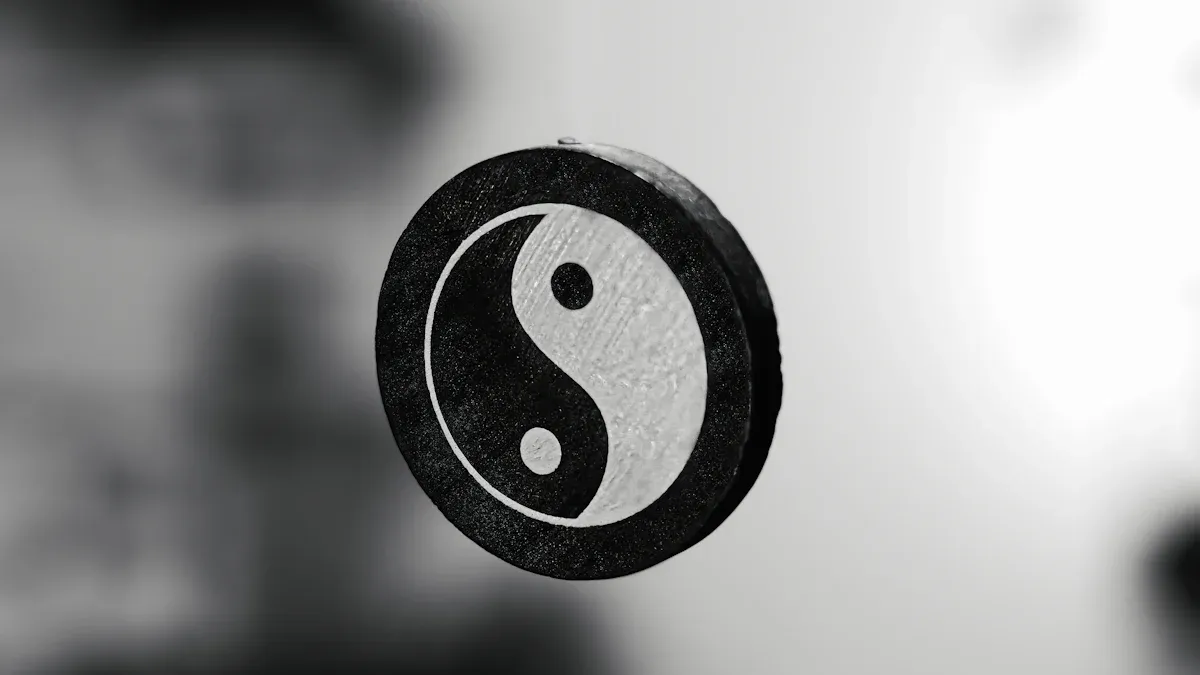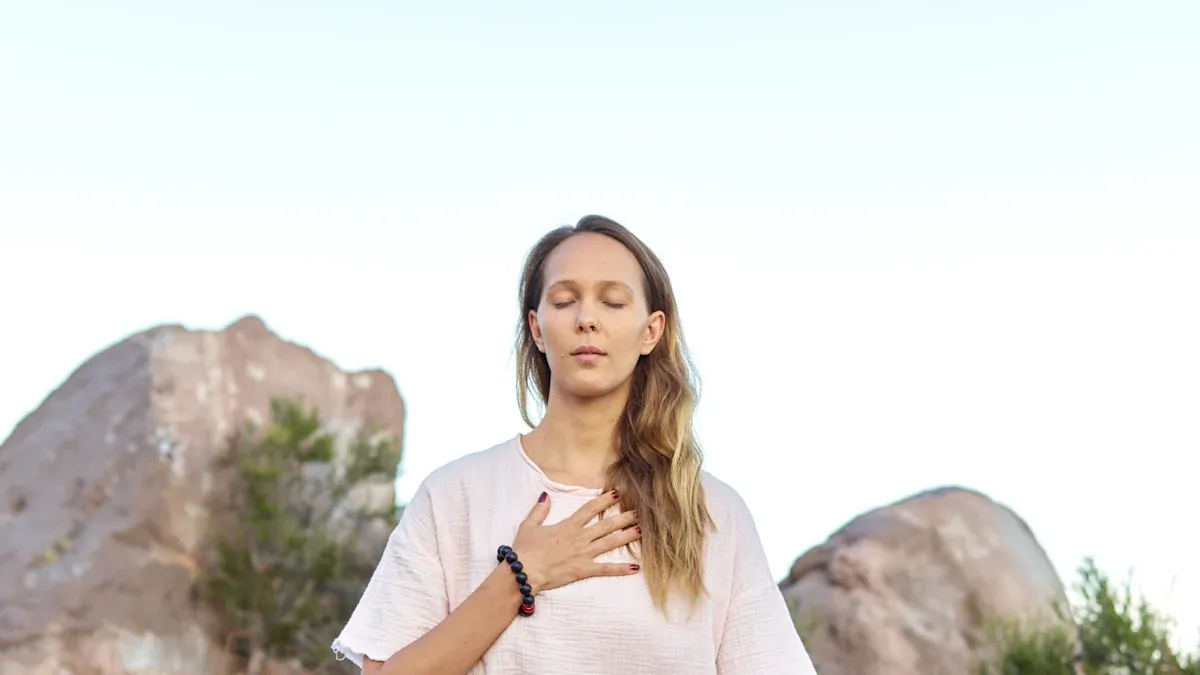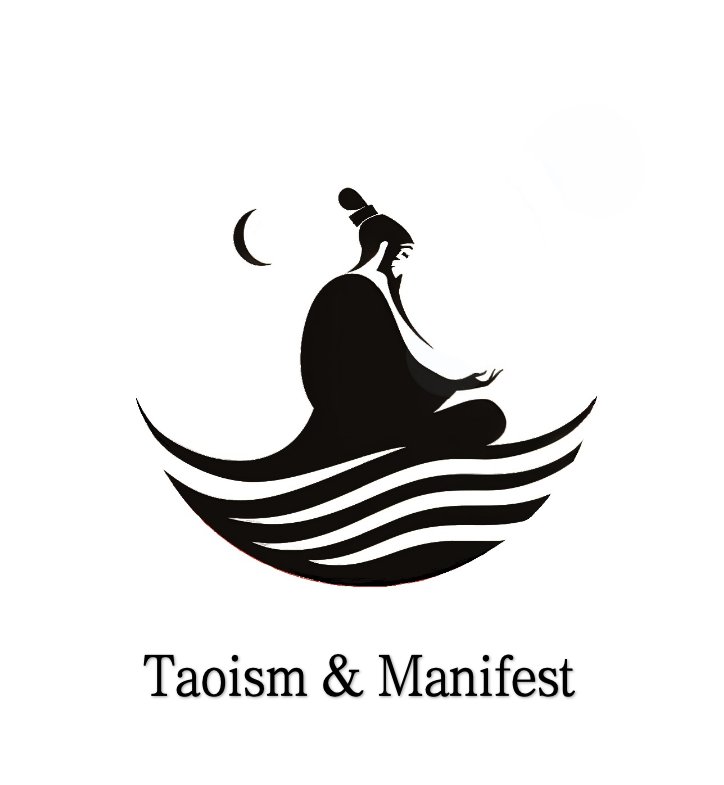
Have you ever felt like your days are a tug-of-war between rushing and resting? Maybe you wake up tired or find yourself snapping at someone over small things. You’re not alone. When life feels out of sync, Yin Yang Balance gives you a way to restore harmony. Take a moment and ask yourself, “Where do I feel off?” Ancient wisdom holds simple answers that might surprise you.
Key Takeaways
Yin Yang Balance helps you find harmony in life. It helps you balance things like rest and action. Knowing about this balance can help you feel better.
Pay attention to your feelings and what is around you. Notice when you feel stressed or too busy. This helps you see where you need more balance.
Try mindfulness practices like meditation or tai chi. These activities help you relax. They help you connect with your inner self.
Make small changes to your daily habits. Take short walks or do deep breathing. These steps can help your energy and mood get better.
Healthy relationships are important for balance. Spend time with loved ones. Listen carefully to make your connections stronger.
What Is Yin Yang Balance?

Yin and Yang Explained
Yin Yang Balance comes from ancient Chinese philosophy, especially Taoism. You can trace its roots back to the 4th century BC. The Tao Te Ching talks about dark and light, showing how Yin and Yang connect. These ideas even existed before the Five Elements theory. You might hear about Zou Yan and the Yin and Yang School, which helped shape these concepts.
Yin and Yang are two sides of everything. They are opposites, but they need each other. You see this in pairs like:
Light and dark
Action and rest
Hot and cold
Joy and sadness
Yin stands for quiet, stillness, and coolness. Yang means movement, brightness, and warmth. You can’t have one without the other. They work together, not against each other.
Think of Yin and Yang as a dance. Each step needs both partners. If one leads too much, the dance loses its flow.
Balance in Everyday Life
You see Yin Yang Balance all around you. In your daily routine, you might feel pain when someone you love is sick. At the same time, you can feel happiness when a friend brings you flowers. Life mixes struggle and joy. That’s Yin and Yang in action.
Here are some ways you notice this balance:
You rest after working hard.
You feel calm after excitement.
You enjoy quiet moments after busy days.
When you keep Yin Yang Balance, you feel more harmony. You don’t get stuck in just one feeling or state. You move between opposites, finding peace in the middle. This balance helps you handle stress and enjoy life more.
Recognizing Imbalance
Signs at Home
You might notice imbalance at home when things just don’t feel right. Maybe your space feels cluttered, or you keep losing things. Sometimes, you argue more with family or feel tired even after a full night’s sleep. If you always rush from one task to another, you miss out on quiet moments. On the other hand, if you spend too much time alone, you might feel lonely or disconnected.
Tip: Try to spot patterns. Do you feel tense when the house is noisy? Do you get restless when it’s too quiet? These clues help you see where balance is missing.
Work and Routine Clues
At work, imbalance shows up in many ways. You might feel stuck in endless meetings or get frustrated with coworkers. Sometimes, you take on too much and forget to rest. Other times, you avoid tasks and lose focus. Here are some common signs:
Too much control can make you feel trapped and unable to share ideas.
Too little structure can lead to chaos and confusion.
Arguments and misunderstandings happen more often.
Systems break down, and things don’t get done.
Leaders may act overconfident, ignoring feedback from others.
If you notice these problems, your work life may need more Yin Yang Balance.
Inner Imbalance
Inside, imbalance can make you feel anxious or sad. You might struggle to relax or find it hard to get motivated. Sometimes, you feel empty even when you’re busy. Your thoughts race, or you can’t sleep well. When you ignore your feelings or push yourself too hard, your body and mind suffer.
Ask yourself: Do you feel calm and energized most days? If not, it’s time to look for ways to restore harmony. Small changes can help you feel better and bring more balance to your life.
Cultivating Yin Yang Balance

Mindset and Awareness
You start with your mindset. When you pay attention to your thoughts and feelings, you notice patterns. Sometimes you push yourself too hard. Other times you avoid challenges. You can practice awareness by taking a few minutes each day to sit quietly. Focus on your breath. Notice how you feel. This helps you spot when you lean too much toward action or rest.
Mindfulness practices like meditation, qigong, or tai chi help you find balance. These activities calm your mind and body. They also help you connect with your inner self. Here’s a table showing how these practices support Yin Yang Balance:
Mechanism/Benefit |
Description |
|---|---|
Relaxation Response |
Lowers heart rate and blood pressure. Releases muscle tension. |
Enhanced Mood |
Improves mood and helps your body handle stress. |
Interoception and Exteroception |
Helps you understand yourself better. |
Yin/Yang Theory |
Balances natural forces for better health. |
Five Element Theory |
Guides choices in food and health routines. |
Holistic Contribution |
Supports healing and long-term health. |
Tip: Try a short breathing exercise before bed. Notice how your body feels. This simple habit can help you restore harmony.
Daily Habits
Your daily habits shape your energy. You need both activity and rest. Experts suggest these habits to keep your balance:
Eat healthy foods and drink water.
Move your body every day.
Keep a weight that feels right for you.
Sleep enough each night.
Find ways to manage stress.
You can mix different types of movement to support Yin Yang Balance. Here are some routines you might try:
Yoga and cycling. Yoga calms your mind. Cycling boosts your energy.
Cycling and running. Switch between these to protect your body and stay strong.
Running and strength training. Build muscle and keep your heart healthy.
Note: You don’t have to do everything at once. Start with one new habit and see how you feel.
Relationships
Your connections with others matter. You need both time alone and time with friends or family. If you spend too much time by yourself, you may feel lonely. If you never get quiet moments, you may feel overwhelmed. Try to notice when you need more balance.
You can practice listening and sharing. When you talk with someone, give them your full attention. When you need space, let others know. Healthy relationships help you feel supported and calm.
Callout: If you notice tension with someone, take a break and return to the conversation later. This helps restore harmony.
Environment
Your space affects your mood and energy. A cluttered room can make you feel stressed. A quiet, clean space helps you relax. You can organize your home to support Yin Yang Balance. Put away things you don’t use. Add plants or natural light. Spend time outside when you can.
Practices like tai chi and qigong also help your body and mind. They increase your body’s balance and reduce anxiety. You may notice better posture and more energy. These activities help your Qi flow smoothly.
Here are some resources to help you track and improve your balance:
“The Tao of Stress: How to Calm, Balance, and Simplify Your Life” by Robert G. Santee
“The Tao of Health, Sex, and Longevity: A Modern Practical Guide to the Ancient Way” by Daniel Reid
“Yin Yang: A Guide to Understanding Yin Yang Balancing for Beginners” by Sarah Dean
“Exploring the Concept of Yin-Yang in Traditional Chinese Medicine” by Hong Liu et al.
Mayo Clinic – Stress Management
WebMD – The Effects of Stress on Your Body
Tip: Try spending a few minutes in nature each day. Notice how you feel after being outside.
You can use these ideas to bring more harmony into your life. When you pay attention to your mindset, habits, relationships, and environment, you support Yin Yang Balance. Small changes add up and help you feel more peaceful and strong.
Benefits of Harmony
Well-Being
When you bring Yin Yang Balance into your life, you start to notice real changes in your well-being. You feel more energy during the day. Your body feels lighter, and your mind gets clearer. You wake up feeling refreshed instead of tired. You find it easier to focus on school or work. Small aches and pains may fade away. You smile more often. Your mood stays steady, even when things get tough.
Tip: Try keeping a journal for a week. Write down how you feel each day. You might spot patterns that show your well-being improving.
Stress Relief
Stress can sneak up on you. It makes your muscles tight and your thoughts race. When you practice harmony, you learn to switch between action and rest. You take breaks when you need them. You breathe deeply and let your body relax. This helps your heart rate slow down. You feel calmer and less worried. You handle problems with a clear mind.
Here’s a simple table showing how harmony helps with stress:
Stress Sign |
Harmony Response |
|---|---|
Racing thoughts |
Mindful breathing |
Tense muscles |
Gentle movement |
Feeling stuck |
Taking a short walk |
Overthinking |
Quiet reflection |
Better Relationships
Harmony doesn’t just help you feel good inside. It also makes your relationships stronger. When you balance listening and sharing, you connect better with others. You learn to talk about your feelings and hear what others say. You handle disagreements with respect. You move from fake peace to real understanding.
Genuine communication and emotional sharing lead to deeper, more satisfying relationships.
Addressing conflicts clearly helps you move from surface harmony to true harmony.
Understanding that conflict and harmony are ongoing processes improves how you solve problems together.
When you embrace both Yin and Yang, you become whole. You accept every part of yourself and others. This makes life richer and more joyful.
Action Steps
Quick Practices
You can start restoring Yin Yang Balance with simple activities that fit into your day. Wellness professionals often recommend practices that help your body and mind work together. Here’s a quick look at two popular options:
Practice |
Description |
|---|---|
Acupuncture |
This ancient method uses tiny needles to help your body find balance. Many people find it helpful for lifting mood and easing stress. Studies show it works even better when combined with other treatments. |
Qigong |
Qigong uses gentle movements and breathing to help your Qi flow smoothly. You can practice it almost anywhere. It helps clear out stress and brings calm to your mind and body. |
Tip: Try a few minutes of Qigong in the morning or before bed. Notice how your body feels after.
Small Changes
You don’t need to change everything at once. Small steps can make a big difference. Here are some easy ideas:
Take a short walk outside to connect with nature.
Set aside five minutes for quiet breathing.
Add a plant or open a window for fresh air.
Switch off screens an hour before sleep.
Alternate between active and restful activities.
Callout: Even a tiny change, like drinking more water, can help you feel more balanced.
Getting Started
If you’re new to Yin Yang Balance, you might wonder where to begin. Experts suggest these first steps:
Notice both your calm (Yin) and active (Yang) sides.
Write down your strengths in each area.
Think about ways to let more Yin or Yang show up, like taking a quiet break or reflecting before acting.
Pay attention to which energy helps you most in different moments.
Try activities like dance, yoga, or journaling to balance your energy.
Remember, you don’t have to do everything at once. Pick one step and see how it feels. Over time, these small actions add up and help you find more harmony every day.
Yin Yang Balance helps you feel more peaceful every day. When you use it, you start to see real changes in your life.
Your health gets better.
Your relationships improve.
You get more done at school or work.
Taoist sages learned about the universe and wanted to live in harmony with it. They did not just use up all their energy at once. Instead, they believed that living in a steady and lasting way brings wisdom and happiness.
You can begin right now by choosing one small thing, like taking a slow breath or going outside for a bit. Each time you pick balance, you become a little stronger. Life always finds its way back to harmony, and you can too. 🌱
FAQ
What does Yin Yang Balance really mean?
Yin Yang Balance means you find harmony between opposites in your life. You notice both rest and action. You accept both happy and tough times. This balance helps you feel calm and strong.
Can I practice Yin Yang Balance if I’m busy?
Yes! You can start with small steps. Take a deep breath, stretch, or pause for a moment. Even a quick walk outside helps. You do not need a lot of time to begin.
How do I know if I need more Yin or Yang?
Check how you feel. If you feel tired or stressed, you may need more Yin—rest and quiet. If you feel bored or stuck, you may need more Yang—movement and action. Listen to your body and mind.
Do I need to follow Taoism to use Yin Yang Balance?
No, you do not need to follow Taoism. Anyone can use Yin Yang Balance. These ideas help you in daily life, no matter your beliefs. You can try simple practices and see what works for you.
What if I lose balance again?
That’s normal! Life changes all the time. You can always return to balance. Try a new habit or take a break. Remember, every day gives you a fresh chance to find harmony.






